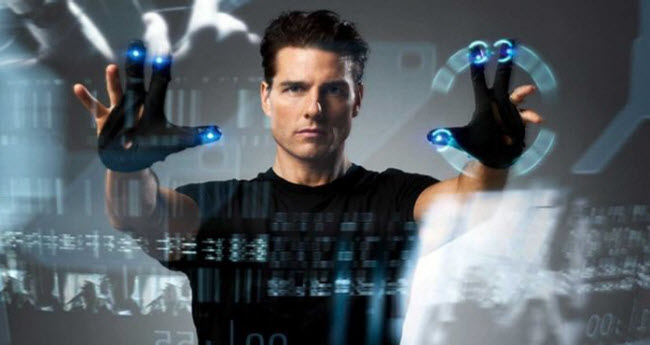Science fiction, whether in written or visual form, has always captivated audiences by presenting concepts that stretch the imagination. Often, these works offer glimpses into the future, and some classic films have even predicted real-world inventions and developments. In this article, we explore several such films whose imaginative ideas have become tangible realities.
A Trip to the Moon – 1902
Space Travel

Jules Verne, a pioneer in science fiction, was among the first to write about space travel in his 1865 novel From the Earth to the Moon. This laid the groundwork for numerous films exploring the concept of traveling to the moon and beyond. However, one film that stands out is A Trip to the Moon, produced in 1902, a time when cinema was still in its infancy.
In this film, French director Georges Méliès presents a whimsical journey to the moon involving explorers traveling in a capsule shot from a cannon. Despite the simplicity of the concept, it was innovative for its time, featuring charming and imaginative special effects. While launching humans via cannon might seem implausible, it is worth noting that the U.S. Navy used cannons to launch projectiles to heights exceeding 100 miles in the 1960s. Although not practical, the film’s idea foreshadowed the real moon landing by astronaut Neil Armstrong.
Metropolis – 1927
Robots

Metropolis, an iconic science fiction film released in 1927, is a silent, black-and-white film notable for its early depiction of robots. It introduced the concept of a humanoid robot, laying the foundation for future robotics. In 2014, Japan unveiled the “Kodomoroid,” a news-reading robot, and Professor Hiroshi Ishiguro of Osaka University introduced “Erica,” a remarkably human-like android. Other robots, like “Atlas,” capable of walking, running, and even performing gymnastics, have also emerged.
The robot concept in Metropolis is impressive, especially given that it was introduced during a period when such technology was inconceivable.
Fahrenheit 451 – 1966
Earbuds

Produced in 1966 and based on Ray Bradbury’s novel, Fahrenheit 451 depicts a dystopian society where books are banned, and “firemen” burn them. Beyond its plot, the film features early predictions of technology similar to modern earbuds. It shows small earpieces functioning as sealed radios with electronic sound fields, playing music and sounds—an innovative concept at a time when transistor radios and bulky headphones were the norm.
The idea became a reality with the release of the Apple iPod in 2001, allowing people to wear earbuds to listen to music, as envisioned in the film over 35 years earlier.
2001: A Space Odyssey – 1968
Video Calls

One of the most influential films in cinema history, 2001: A Space Odyssey, features numerous future predictions, including tablet computers and space tourism. A notable element in this context is video calls, akin to today’s Skype. The film portrays astronaut Dr. Heywood Floyd making a video call from a space station to his family, using a device resembling a credit card—a novel idea at the time.
Despite the technological advancements, video communication was still in its infancy until the advent of internet and smartphone technology made services like Skype commonplace.
Star Trek – 1966
Mobile Phones

Starting as a television series in 1966, Star Trek was known for its technological predictions, which later influenced real-world innovations. The series inspired Martin Cooper, a Motorola engineer, to invent the first mobile phone in 1973, leading to the development of the Motorola DynaTAC. Though the phone initially weighed about a kilogram and had a 20-minute battery life, it evolved over a decade into the sleek, foldable devices we use today.
Demon Seed – 1977
Smart Homes

While some credit Disney’s 1999 film Smart House with being the first depiction of smart homes, Demon Seed (1977) was actually the first to showcase such technology. The film features a smart computer controlling home systems like lights, doors, and alarms. This early portrayal laid the groundwork for the modern smart home technologies we rely on today.
Blade Runner – 1982
Flying Cars

Ridley Scott’s Blade Runner is renowned for its bold predictions for 2019, such as the decline of snakes and constant rain in Los Angeles. One notable prediction was flying cars, a central element of the film’s narrative. Despite various prototypes like the 1947 ConvAirCar 118 and the 1990 Sky Commuter by Boeing, flying cars have yet to become a reality. However, companies like Boeing and Airbus are developing passenger drones that could soon make flying cars a reality.
The Terminator – 1984
Drones

James Cameron’s The Terminator presented a futuristic vision involving powerful robots and time travel. The film also featured armed drones, which have become a reality in modern military operations. By the early 1980s, the U.S. military had unmanned aerial vehicles for various purposes. The MQ-1 Predator, introduced in 2001, became the first military drone capable of remote weapon deployment. The U.S. military is now working on AI-powered drones capable of autonomous decision-making.
Total Recall – 1990
Self-Driving Cars

In Arnold Schwarzenegger’s Total Recall, viewers saw futuristic technologies like wall-sized TVs and routine Mars travel. However, the film also featured self-driving cars, depicted as “Johnny Cab” driven by a robotic driver. Today’s self-driving cars are more complex, using sensors and computer systems to navigate without human intervention. Ongoing development aims to refine this technology to make it a reality.
Star Wars – 1977
Holograms

Though some may categorize Star Wars as fantasy, it contains significant technological predictions. Notably, the film introduced the concept of holograms, as seen in Princess Leia’s message. The technology is now used to create three-dimensional images of deceased artists for concerts and to project virtual guests into studios, highlighting the film’s forward-thinking vision.
